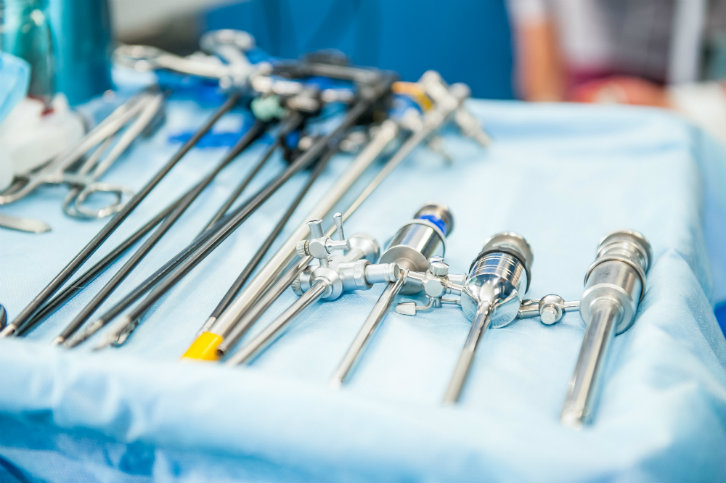
If you’re considering weight loss surgery, you’ve likely spent hours researching each type of bariatric procedure, what they entail, and how they can help you lose weight and keep it off for good. What many weight loss surgery patients don’t realize, however, is how new advancements in bariatric medicine have led to procedures that are less invasive than ever before.
Today, many weight loss procedures are carried out with the help of medical devices and technologies that reduce or completely eliminate the need for incisions. Consequently, many patients can enjoy the weight loss benefits of procedures like gastric bypass and gastric sleeve with fewer side effects and shorter recovery times.
Is a minimally invasive or non-surgical procedure a good option for your weight loss journey? This depends on a number of factors, including the amount of weight you need to lose, your lifestyle and your overall physical health. First, let’s look at the difference between minimally invasive bariatric surgeries and non-surgical weight loss procedures, and how to determine which is right for you.
Minimally Invasive vs. Non-Surgical Weight Loss Procedures: What’s the Difference?
The distinction between minimally invasive and non-surgical procedures is based on whether or not a procedure requires an incision. Generally, minimally invasive surgeries require much smaller incisions than traditional “open” surgeries, whereas non-surgical procedures do not require any incisions.
What is Minimally Invasive Surgery?
A minimally invasive procedure is one that requires very small incisions of no more than an inch or two in length. Generally, these procedures are carried out through those incisions with the help of a laparoscope — also called laparoscopic surgeries. These long, thin tubes are equipped with small cameras, lights and tools that allow a physician to perform entire surgeries without the need to “open” large amounts of skin and muscle.
Robotic surgeries are also considered minimally invasive, since they are also performed through small incisions.
What is a Non-Surgical Procedure?
Unlike minimally invasive surgeries, non-surgical procedures do not require a physician to create incisions, or cuts, in the body. Because non-surgical procedures do not require incisions, they are usually performed through natural orifices like the mouth, and are performed using a medical device called an endoscope.
Endoscopes are long, flexible tools similar to laparoscopes. However, endoscopes are specifically designed to give physicians a better view of hollow organs or bodily cavities with the use of a small camera, and are not usually equipped with tools. Some non-surgical endoscopic procedures only require the use of sedatives rather than anesthesia, which can significantly reduce complications.
Minimally Invasive Weight Loss Surgeries
Gastric Sleeve (Sleeve Gastrectomy)
The procedure: In gastric sleeve surgery, about 75-80% of the stomach is removed, which leaves a longer and thinner stomach pouch resembling a sleeve.
Why it’s minimally invasive: When performed using a laparoscope, gastric sleeve surgery requires only a few small incisions in the abdomen in addition to the incision in the stomach itself.
Lap-Band (Adjustable Gastric Banding)
The procedure: In lap-band surgery, an inflatable band is positioned around the top portion of the stomach, making a top stomach “pouch” that is much smaller. The band is inflated with saline solution through a port placed under the skin, and can be adjusted over time.
Why it’s minimally invasive: Done through laparoscopy, it requires a few small incisions in the stomach.
Gastric Bypass
The procedure: In gastric bypass surgery, changes are made both to the stomach and the small intestine. First, the stomach is divided, creating a small top stomach pouch. Then, the top part of the small intestine is divided. One part is attached to the new stomach pouch, and the other part is attached to the lower part of the small intestine, which allows digestive enzymes and stomach acids to mix with the food.
Why it’s minimally invasive: Some doctors continue to perform this procedure as open surgery, but when done laparoscopically, there are only a few small abdominal incisions involved. At Soma Bariatrics, we perform this procedure laparoscopically.
Non-Surgical Weight Loss Procedures
Gastric Balloon (Intragastric Balloon)
The procedure: In the gastric balloon procedure, a soft silicone balloon is placed in the stomach through the mouth and esophagus. The balloon is then filled with saline solution to about the size of a grapefruit, which restricts the size of the stomach and the amount of food it can hold.
Why it’s non-surgical: There are two primary types of gastric balloons. One type is placed with a long, thin endoscope; the other is swallowed in pill form and then filled endoscopically. Either way, since the procedure is done through a patient’s mouth and esophagus, there are no incisions.
Endoscopic Sleeve Gastroplasty
The procedure: In endoscopic sleeve gastroplasty, the procedure accomplishes the same change as a sleeve gastrectomy without surgical incisions. Through an endoscope, sutures are made in the stomach to reduce its size and length, like stitching a piece of fabric into accordion pleats.
Why it’s non-surgical: There are no incisions. Instead, this procedure is performed by inserting an endoscope into the mouth and down the esophagus.
Get Help Choosing the Right Bariatric Procedure for You
While prior research about different weight loss procedures is always a great idea, you should speak with a bariatric surgeon before choosing between a minimally invasive surgery and a non-surgical procedure. They can help you understand how your body will tolerate each type of procedure based on your body type, weight loss goals, and other obesity-related health conditions.
Need help deciding what type of weight loss procedure is right for you? Contact us to schedule a free consultation with our experienced bariatric surgeon.




